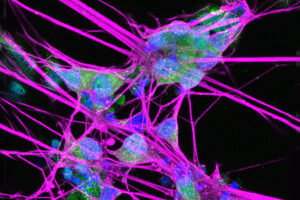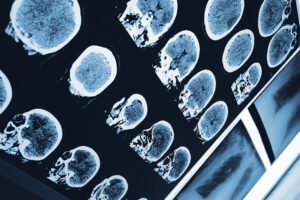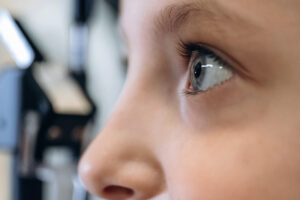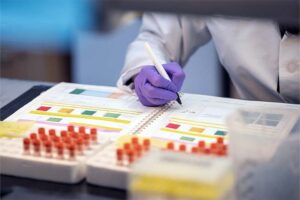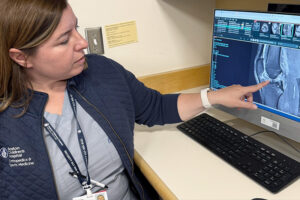A world of difference: Why Noah traveled from Florida for multiple sclerosis care
When Noah started having headaches four years ago, his mom, Jonda, initially wondered if it was a classic kid ruse. “I thought maybe he was trying to get out of doing chores,” she remembers. But when the headaches got worse and even his eyes hurt, she brought him to their local emergency room in Florida. ... Read More about A world of difference: Why Noah traveled from Florida for multiple sclerosis care
Hope in sight for autosomal dominant optic atrophy (ADOA)
Autosomal dominant optic atrophy (ADOA), the most common genetic optic neuropathy, is an insidious disease. It often presents slowly during childhood by way of blurry vision, trouble reading or focusing, and sometimes only as a failed vision test. But behind these subtle signs lies progressive, irreversible vision loss in both eyes caused by deterioration of ... Read More about Hope in sight for autosomal dominant optic atrophy (ADOA)
The dopamine reset: Restoring what’s missing in AADC deficiency
In March 2023, a young girl came to Boston Children’s Hospital unable to hold up her head — one striking symptom of aromatic L-amino acid decarboxylase (AADC) deficiency. This rare neurological disorder prevents the brain from producing dopamine and serotonin — essential chemicals for controlling movement, mood, and basic body functions. Without them, children experience ... Read More about The dopamine reset: Restoring what’s missing in AADC deficiency
An unbreakable bond: Brothers turn medical complexities into superpowers
“Look! Is that one JetBlue? I think that one’s Delta!” Running through the grass, climbing on the jungle gym, and watching planes take off and land at nearby Logan Airport: Castle Island in South Boston is Patrick and Teddy’s happy place. The brothers, ages 4 and 3 respectively, are almost as obsessed with airplanes as ... Read More about An unbreakable bond: Brothers turn medical complexities into superpowers
New research sheds light on the genetic roots of amblyopia
For decades, amblyopia has been considered a disorder primarily caused by abnormal visual experiences early in life. But new research from Mary Whitman, MD, PhD, pediatric ophthalmologist in the Department of Ophthalmology at Boston Children’s Hospital, and her colleagues suggests the story is more complicated. “There may be underlying neurodevelopmental differences in children with amblyopia ... Read More about New research sheds light on the genetic roots of amblyopia
Parsing the promise of inosine for neurogenic bladder
Spinal cord damage — whether from traumatic injury or conditions such as spina bifida — can have a profound impact on bladder function. This can result in neurogenic bladder, a problem in which damage to the nerves involved in urination leads to a loss of bladder control. Neurogenic bladder is currently managed with medication, Botox ... Read More about Parsing the promise of inosine for neurogenic bladder
Team spirit: How working with an allergy psychologist got Amber back to cheering
A bubbly high schooler with lots of friends and a passion for competitive cheerleading: On the surface, Amber’s life looks perfect. She even knows what she wants to be when she’s older — a cosmetologist, because she wants to help people feel their best through beauty. Her determination to help others is what drove her ... Read More about Team spirit: How working with an allergy psychologist got Amber back to cheering
Help your child manage anxiety about school violence
With news of school shootings and other violence often reaching children, parents sometimes grapple with how to help their child cope with fear and stress. We asked Erica Lee, PhD, a psychologist in the Department of Psychiatry and Behavioral Sciences at Boston Children’s, to offer suggestions on how you can ensure your child feels safe and comfortable going to ... Read More about Help your child manage anxiety about school violence
Ask a sports medicine specialist: Why are ACL tears so common among female athletes?
When an athlete is sprinting after an opponent who suddenly stops or changes direction, their anterior cruciate ligaments (ACLs) make it possible for them to continue their pursuit. This much talked-about ligament is the reason athletes can pivot, cut, jump, and land. “The ACL is one of the main stabilizing ligaments in the knee,” explains ... Read More about Ask a sports medicine specialist: Why are ACL tears so common among female athletes?
“Princess June” reigns supreme over Rasmussen syndrome
What do you call a “girly” 5-year-old who adores dolls and frilly nightgowns? If you’re one of June Pelletier’s nurses at Boston Children’s Hospital, the answer is “Princess June,” of course. While Her Highness would much prefer to reign over her parents and three siblings at home in Connecticut, she’s no stranger to the hospital. ... Read More about “Princess June” reigns supreme over Rasmussen syndrome



